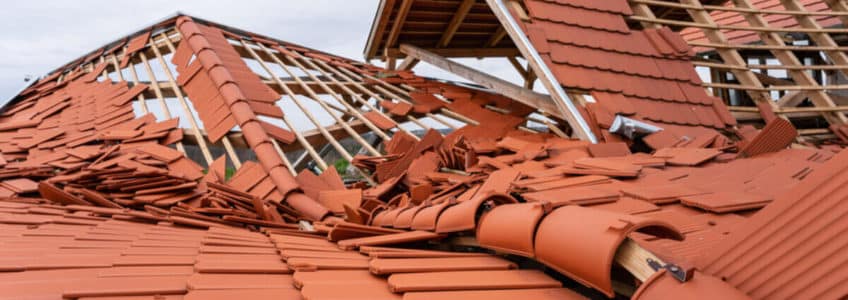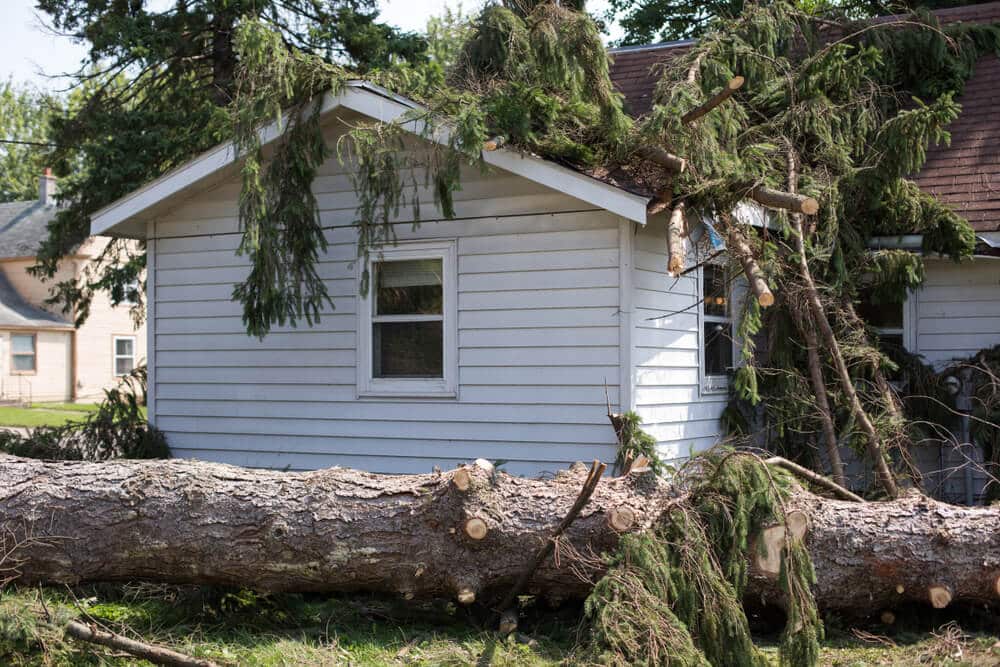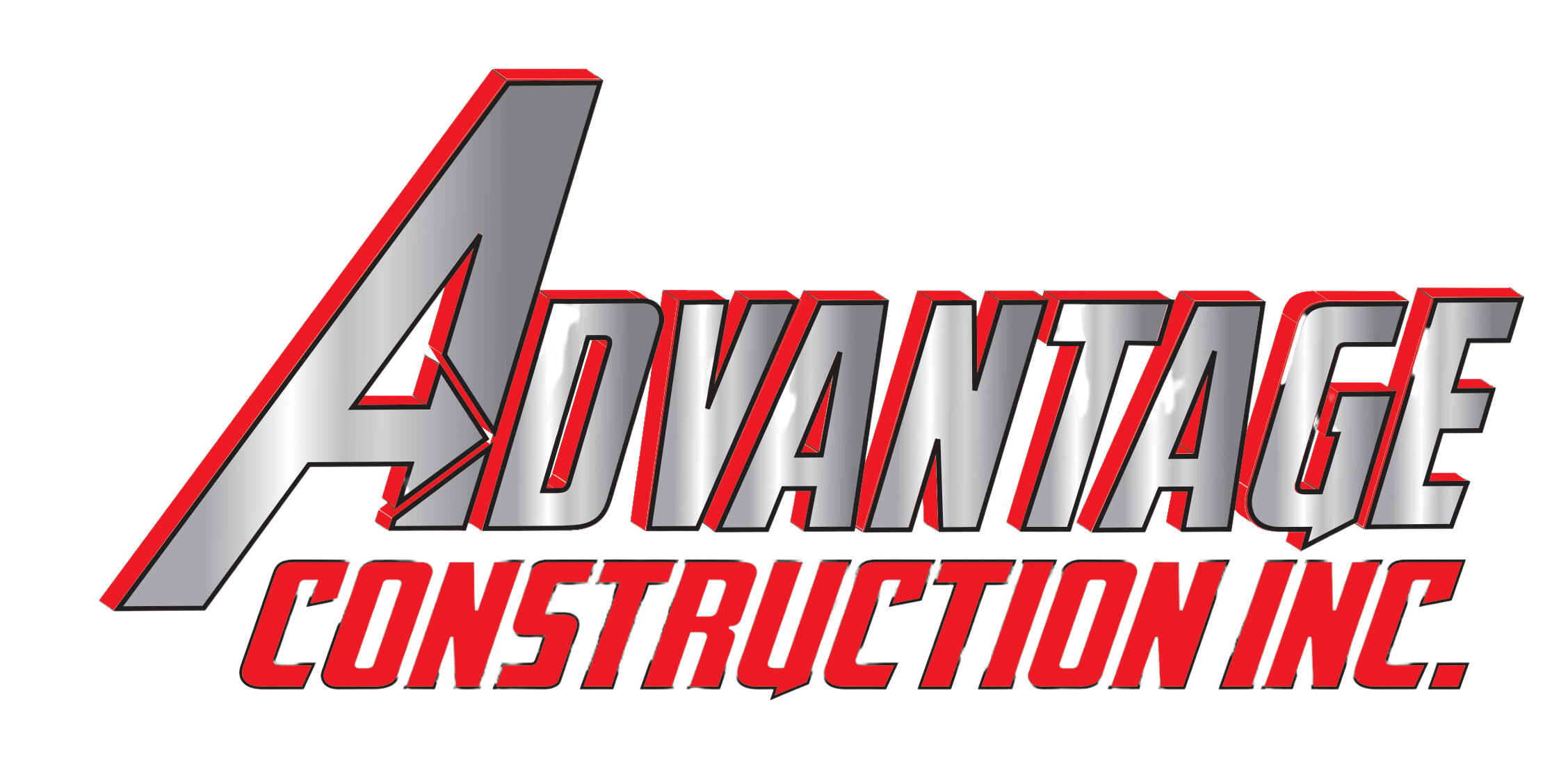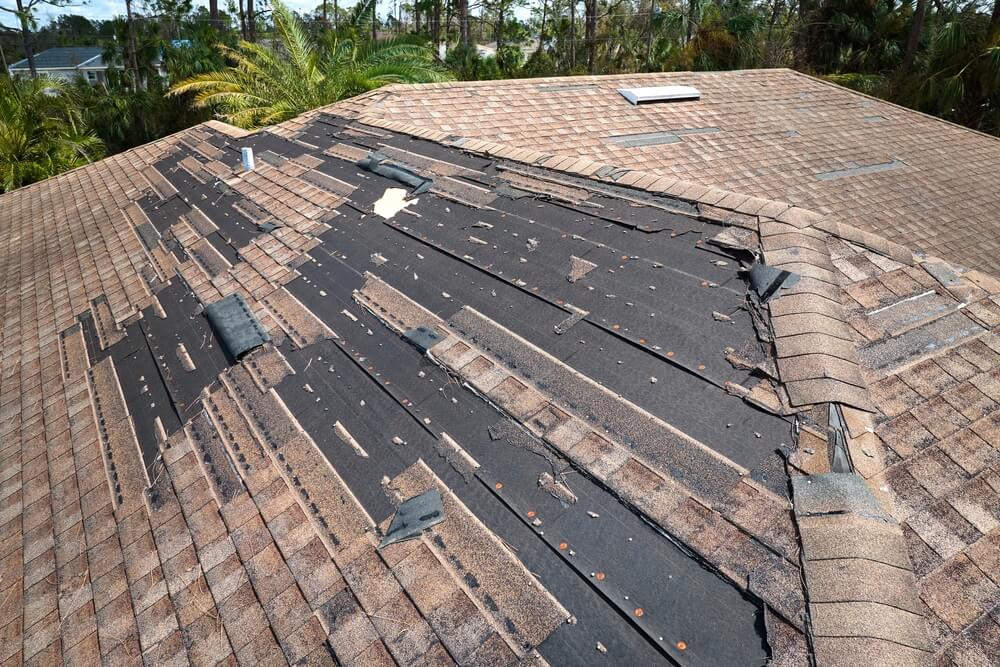
The integrity of a roof is crucial for the protection and safety of your property. With severe weather conditions becoming more common, understanding the impact of wind on your roof can help you identify problems early. In this article, we’ll delve deep into the signs of wind damage on a roof and underline the importance of regular inspections.
Signs of Wind Damage on a Roof
Understanding what wind damage looks like on a roof is an initial step towards ensuring the longevity and functionality of your roof.
 Missing Shingles
Missing Shingles
One of the most evident signs of wind damage is missing shingles. The strong force can pry shingles from their adhesive, leading to gaps on the roof surface. These gaps make your home vulnerable to further damage, like water leaks.
Curled or Lifted Shingles
Even if the shingles aren’t entirely blown away, they might get curled or lifted at the edges. This is often an indication that they have been affected by wind and might soon come off if not addressed promptly.
Granule Loss
Asphalt shingles have a granular top which gives them their characteristic rough texture. If you start noticing these granules in your gutters or at the base of your downspouts, it could indicate that the shingles are losing their protective layer due to wind abrasion.
Damaged Flashing
Flashing, usually made of thin metal, seals the intersections or protrusions in the roof like vents and chimneys. Strong winds can loosen or damage these flashings, leading to potential leak sites.
Addressing Wind Damage on a Roof
Immediate Inspection
If you suspect that your roof might have been affected by strong winds, the first step is to conduct an inspection. Professionals can spot subtle signs and advise on the extent of damage.
Documentation
If you’re looking at insurance claims, documenting the wind damage becomes essential. Take clear photographs of all affected areas, and it might be useful to have a professional’s assessment in writing. Keeping a record of past damages and repairs can streamline the claims process and provide historical data on the roof’s condition.
Repair or Replace
Depending on the extent of damage, you might have to repair the affected sections or replace the entire roof. A professional can guide you on the best course of action. Always ensure that repairs or replacements are done using high-quality materials to prevent future damage and prolong the roof’s lifespan.
Conclusion


 Missing Shingles
Missing Shingles